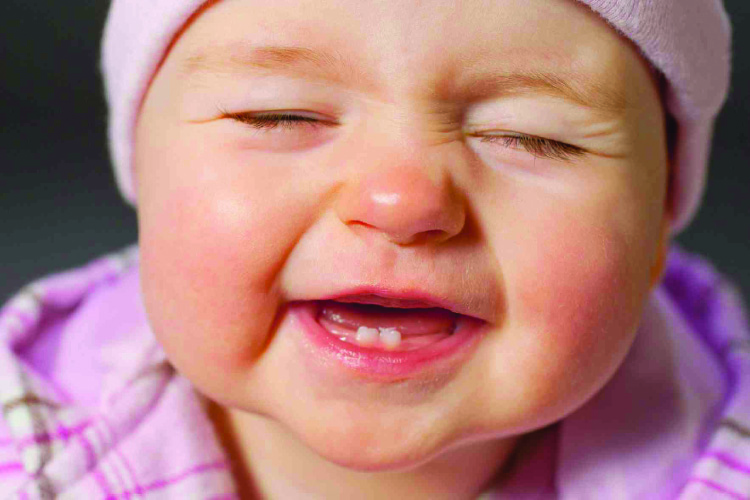Teething can be a frustrating and sometimes painful process for babies. Learn more about teething so you’d know what to expect and help your little one go through it a little easier.
The teething process begins when the first set of teeth, called primary teeth begin to emerge through your baby’s gums. Teething usually starts when your baby is about 6 months old. But some children may start teething at 3 months and 12 months of age.
The lower front teeth usually shows up first while the upper front teeth starts to appear 1 to 2 months after the lower front teeth. Most kids have all 20 of their primary teeth by their third birthday. If your child’s teeth come in much slower than this, speak to your doctor.
Teething Symptoms
There are many symptoms that indicate teething. Babies may drool more and want to chew on things. Babies may bite on their fingers or toys to help relieve the pressure in their gums. For some babies, teething doesn’t affect them much while some may be especially fussy and irritable during this time. This may be because of soreness and swelling in the gums before a tooth comes through.
There may also be crying spells and disrupted sleeping and eating patterns. These symptoms usually begin about 3 to 5 days before the tooth shows, and they disappear as soon as the tooth breaks the skin. Teething is generally uncomfortable for your little one, but if your baby seems to be in a lot of pain or the symptoms are severe, talk to your doctor.
Your baby’s temperature may also be a little higher than normal due to tender and swollen gums. However teething rarely causes high fever or diarrhoea. If these conditions come up during the teething phase, something else is probably causing the fever and you should contact your doctor.
Easing the Teething Phase
For some babies teething is not a very pleasant process. Here are some ways to soothe them:
- Gently rub your baby’s gum with a clean finger or cold teething ring for about 2 minutes at a time. Many babies find this soothing, although they may not like it at first.
- TIP! Rubber teething rings are better than those with liquid inside because they may break or leak. If you use a teething ring, chill it in the refrigerator, but not the freezer. Also, never boil to sterilize it — extreme changes in temperature could cause the plastic to get damaged and leak chemicals.
- If your baby needs something to chew on, use safe objects or baby products designed for teething. Make sure it’s big enough that it can’t be swallowed or choked on and won’t break into small pieces.
- TIP! A wet washcloth placed in the freezer for 30 minutes makes a handy teething aid. Be sure to take it out of the freezer before it becomes rock hard — you don’t want to bruise those already swollen gums — and be sure to wash it after each use.
- Teething biscuits and frozen or cold food are advisable for kids who are already eating solid foods. Don’t
use them if your child has not yet started solids. And make sure that no pieces break off – they may pose a choking hazard. - If needed, ask your doctor if it is ok to give your baby an over-the-counter pain reliever that is labelled for his or her specific age.
- Never place an aspirin against the tooth, and don’t rub alcohol on your baby’s gums.
- Before using any other teething remedies, be sure to talk to your doctor about which types are safe and how often to use them.
- Wipe your baby’s face often with a cloth to remove the drool and prevent rashes from developing.
Baby Dental Hygiene
For long term dental health, the care and cleaning of your baby’s teeth is important. Even though the first set of teeth will fall out, tooth decay makes them fall out faster, leaving gaps before the permanent teeth are ready to come in.
The remaining primary teeth may then crowd together to fill in the gaps, causing the permanent teeth to come in crooked and out of place.
Experts advise that it’s best to practise daily baby dental care even before your baby’s first tooth emerges. Wipe your baby’s gums daily with a clean, damp washcloth or gauze, or brush them gently with a soft, infant-sized toothbrush and water. Refrain from using toothpaste at this time.
Toothpaste can be used as soon as the first tooth appears, but keep it as minimal as possible. You can use a little more once your child knows how to spit it out (usually around 3 years old). Don’t let your child swallow the toothpaste or eat it out of the tube because an overdose of fluoride can be harmful to kids.
When all your baby’s teeth are in, brush them at least twice a day and especially after meals. A good time to start flossing is when two teeth start to touch. Talk to your dentist for advice on flossing those tiny teeth.
















